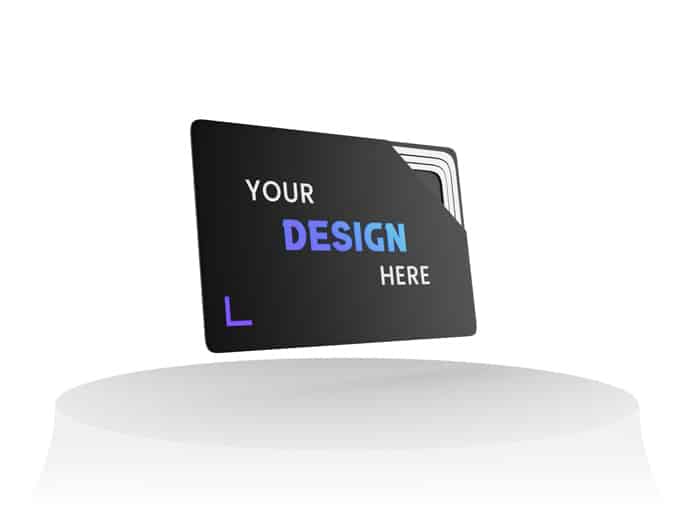
The main stages in producing a business card

Alongside classic, printed business cards, digital business cards are booming.
In this article, you’ll find out what a business card should include, and how it’s produced.
What is the purpose of a business card?
Many people use business cards to leave a trace in the memory of their contacts, to keep in touch more easily, and to widen their circle of friends and business contacts.
A business card is a small document containing the owner’s contact details. Most of the information recorded is the address, job title, name, telephone number and e-mail address. You can, of course, also add Facebook, Instagram, LinkedIn and website references. What’s more, you can easily insert your slogan or company logo as you wish.
In addition to classic business cards, there are now also digital business cards.
Virtual or digital business cards have the same function as traditional business cards: they are used to digitally exchange any information you wish.
These cards are a great way to make a strong impression, thanks to the ease of use they offer: simply scan a qr-code or send the information directly via an NFC chip.
Why opt for digital business cards?
One of the main advantages of digital business cards is their efficiency and speed. In fact, they don’t need to be printed in order to be used: all data is stored on a secure server, which sends it on demand to the contact via his or her smartphone.
What’s more, updating contact details is easy with a digital card: only a few adjustments are needed, and the operation is completed very quickly, since everything is in digital format, so easily accessible and modifiable.
With a digital business card, you no longer need to order new prints, and therefore consume paper or cardboard.
As a result, using digital business cards greatly reduces the ecological impact of your business communications.
So what are the main steps involved in producing a traditional business card?
First of all, if you prefer to do it yourself, you’ll need to choose software that you can easily get to grips with, to reduce the risk of poor design.
You can even use several tools to create business cards (such as the Adobe Graphics Suite). In fact, there are professional software packages that require training, and others that are easier for a beginner to use. Nevertheless, our advice is to use a company specialized in the creation of printed or digital business cards, because on the one hand, you’ll get a precise, professional result, and on the other, you won’t waste any time: in the business world, that’s precious!
Step 1: Define your business card format
To make a success of your business card, you need to choose the right format so that the information is correctly presented.
Step 2: define background color and graphic enhancements
Business cards with a white background and black lettering are still the order of the day, but there’s nothing to stop you getting creative with a colored background.
Be careful not to overuse photographs, as they often detract from the legibility of contact details.
The background should always correspond to the content of the business card: if you offer a high-tech service, don’t choose flowers in the background! Once you’ve customized the display dimensions of your card, you’ll need to spend a little time choosing the background that best suits your project.
Step 3: Logo insertion
Logos and colors are very important visual aspects. They need to be fully integrated into the layout from the outset.
The brand identity of your business card, whether digital or printed, must be immediately apparent.
The logo really makes the difference.
It’s usually located in the center of the card, or possibly in the top left-hand corner.
Other visual and graphic elements can be inserted to complement the logo.
If you don’t have one, or if you’re not satisfied with the existing one, don’t hesitate to call on a recognized graphic designer to create a high-quality one that will really set you apart.
Step 4: Choose the font
The role of the font in a business card, even in the information offered digitally, cannot be ignored.
Indeed, it’s important that the presentation of the business card is attractive, so that the person you’re talking to will want to contact its owner.
The font size should be neither too large nor too small: it contributes to the reader’s legibility and visual comfort. Once you’ve included your logo in the design of your business card, you’ll need to choose an attractive font to attract the attention of recipients, while conveying a good image of you and your company.
Step 5: Insert your personal and professional information
Business cards, whether digital or physical, are media designed to share and include information for future contact.
This information should include your name or company name, job title (current or future), e-mail address, telephone number and website address.
You can also add information on social networks, a slogan or text tagline, a QR code or any other important information you feel would be useful.
Effective presentation of personal or professional information is essential for successful communication. Once you’ve chosen the right font, you need to present your information in a professional, hierarchical way.
Organized presentation of information is by far what will make the difference to your business card. So it’s up to you to think carefully about how to organize your personal information.
Don’t hesitate to ask a specialist card designer how to do this, as his experience will save you precious time and, above all, ensure that you have a truly effective digital version for communicating!
Finally, you’ll need to save your card in the desired format if you’ve created it yourself: this is the last step you’ll need to take!
Your business card has just been created.
You’ve moved on to the next stage!
However, all your hard work will be for nothing if you haven’t saved your design to the software, not only on your computer or smartphone, but also in a variety of formats: Word, PDF, and so on.
The PDF format is widely used, and we advise you to use it as a priority if you choose to send your design to a printer.
On the other hand, for a digital business card, VCard is the preferred format.
But don’t forget that if you opt for a digital business card, the problems of formats, margins and bleed will be a distant memory, because they’re of no use: your contact details are read directly on your contact’s smartphone or tablet.
In the age of almost everything digital, the digital business card model is replacing traditional models. Indeed, we live in a time when the real and virtual worlds are merging, so it’s important not to stand on the sidelines!
Virtual business cards are very economical to buy and cannot deteriorate. Nevertheless, traditional business cards are still widely used today, thanks to their ease of use and compact size.
You’ve just discovered the main steps involved in creating a business card: now all you have to do is take action, and set yourself apart from the competition!
Written by Camille BODET
The digital business card is a real ally for professionals wishing to promote their business effectively and instantly. In the...Lire la suite
VKARD is an innovative and effective solution to help all professionals stand out from the crowd and reinforce their brand...Lire la suite
If you prepare properly for a job interview, you'll have every chance of winning over the recruiter and getting the...Lire la suite
LinkedIn is a world-renowned business platform, and for good reason! Thanks to its many networking options, LinkedIn is the tool...Lire la suite
Find out how Leexi AI optimizes the management of videoconferences and business calls, saving time and improving efficiency.
In the professional sphere, it's vital to know how to convey certain strong values in order to stand out and...Lire la suite
Mastering the art of conversation is a real asset! By mastering the subtle art of conversation, you'll be able to...Lire la suite
Are you taking part in a trade event and want to do everything you can to make a good impression?...Lire la suite
CRM (Customer Relationship Management) represents a genuine corporate strategy for managing business contacts. This popular tool for professionals is in...Lire la suite
At a time when the professional world is in a perpetual state of competition, we might wonder what place altruism,...Lire la suite















